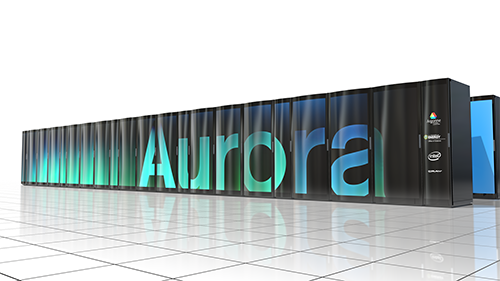Enabling important research is sort of the point of pursuing of exascale computing. One case-in-point is work by USC computational physicist Aiichiro Nakano that’s planned for Aurora – now scheduled to become the first U.S. exascale machine. He is investigating thin layered materials which generate electricity when exposed to light.
Nakano’s work is profiled in a recent article in the Department of Energy’s ASCRDiscovery newsletter.
 “They’re attacking the problem with an allocation of supercomputing time from the Department of Energy INCITE (Innovative and Novel Computational Impact on Theory and Experiment) program. Their project also has been chosen for the Early Science Program on Aurora, the next major supercomputer to launch at the Argonne Leadership Computing Facility, a DOE Office of Science user facility at Argonne National Laboratory near Chicago. Early science projects will test the new machine before it enters full production. DOE expects to complete Aurora in 2021,” notes the article.
“They’re attacking the problem with an allocation of supercomputing time from the Department of Energy INCITE (Innovative and Novel Computational Impact on Theory and Experiment) program. Their project also has been chosen for the Early Science Program on Aurora, the next major supercomputer to launch at the Argonne Leadership Computing Facility, a DOE Office of Science user facility at Argonne National Laboratory near Chicago. Early science projects will test the new machine before it enters full production. DOE expects to complete Aurora in 2021,” notes the article.
Layered materials, expected to dominate nanoscience in this century, have electronic, optical, magnetic and chemical properties that could make them useful in cellphone circuits or other small and flexible electronic devices. They can be made of a variety of compounds, each with different properties, in atomically thin layers stacked on top of one another. Sheets of metal could be placed on semiconducting or insulating layers, for instance. The different materials interact weakly, creating a route for electrons to flow freely, conducting electricity.
“The interactions between sheets are so weak that we can stack anything on top of anything,” says Nakano in the article. “Suddenly, there are infinite possibilities for designing new materials.”
The quantum mechanics of these electrons is inherently complex, so Nakano and his colleagues designed simulation engines that use a technique called divide-conquer-recombine to take findings from smaller data sets and extrapolate them to approximations on larger data sets. “We’ll do 100 simulations, each containing just 100 atoms but talking to each other, and then we’ll assemble them to an approximation for the entire 10,000 atoms,” Nakano says. The divide-conquer-recombine method, he says, will calculate the actions of every atom and electron while holding computational costs low and increasing accuracy over brute-force computation, which is at least 10,000 times more time-consuming.
So far, Nakano and his colleagues have examined a layered material made with molybdenum diselenide, a compound useful for electronics, as a potential light-adaptable conductor.
If Nakano succeeds in finding layered materials that become conductors when exposed to light, lasers could act like pens to draw an electronic circuit, accelerating and simplifying what’s now a time-intensive and laborious process. Using light to print circuits “would be much simpler, faster, and cheaper,” he says.
Aurora, of course, remains a bit of a mystery. Announced in April 2015, Aurora is on track to be the United States’ first exascale system. Aurora, originally named as the third pillar of the CORAL “pre-exascale” project, will still be built by Intel and Cray for Argonne National Laboratory (that’s according to DOE statements; a new contract has yet to be inked), but the delivery date has shifted from 2018 to 2021 and target capability has been expanded from 180 petaflops to 1,000 petaflops. (see HPCwire article, US Coalesces Plans for First Exascale Supercomputer: Aurora in 2021)
Nakano is part of Materials Genome Innovations for Computational Software (MAGICS). Directed by USC’s Priya Vashishta, it’s one of three DOE-supported institutes the Obama administration established in its 2011 Materials Genome Initiative. It’s designed to accelerate the pace at which new materials are developed and brought to market, a process that ordinarily takes 20 to 30 years.
Link article in DOE’s ASCRDiscovery newsletter: http://ascr-discovery.science.doe.gov/2018/08/current-developments/
Feature image: A USC team is using non-adiabatic quantum mechanic molecular dynamics simulations in its layered materials genome studies on Aurora to probe the photo-excitation dynamics in a stack of different transition metals. Image courtesy of Aravind Krishnamoorthy, University of Southern California





























































